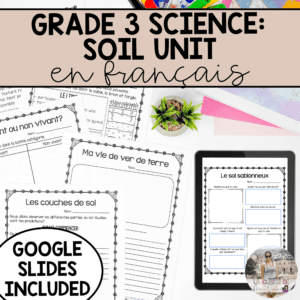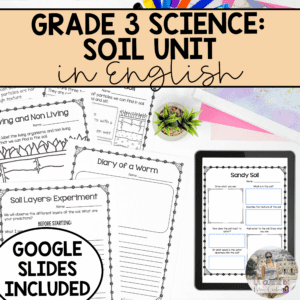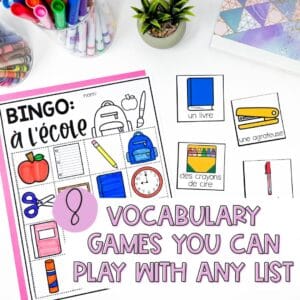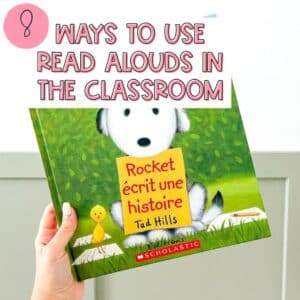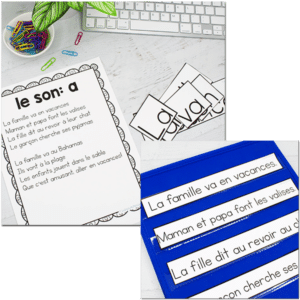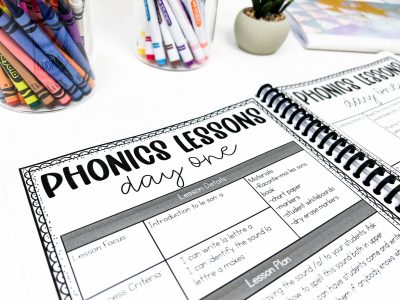Sometimes, the best way for your young students to learn is through hands-on activities. In fact, studies show that students learn a significant amount in ‘active learning’ environments, and children retain 75% of the information they practice when they learn.
Put simply, hands-on learning leads to better retention rates and improves their skills long after the lesson ends. If you’re a Grade 3 French teacher, you can boost your students’ language and science comprehension through an experiment-based soil science unit.
Transform your classroom into a laboratory of fun and give your students a chance to learn through hands-on techniques that will see them getting to grips with their language skills as well as improving their knowledge of the natural environment.
This Soils in the Environment unit, as laid out by the Ontario science curriculum, covers the types of soil and soil additives as well as living and nonliving organisms.
Here are some soil science experiments that will delight your students and yourself with their results at the end of it.
Let’s get into it!
1. Soil Layers Experiment
This fun soil science experiment shows science at work in a real-life setting while helping your students understand scientific vocab in French. You won’t need anything fancy – just a jar with a lid, dirt, and water. Here are the next steps to take.
- Fill the jar halfway with dirt and add water almost to the top of the jar.
- Put the lid on the jar and shake it vigorously.
- Leave the jar and let the soil settle. The soil should separate itself into different layers. These are the different particles which make up the soil, so you can use the example to help your students understand soil particles.
- Ask the students how many layers they see and why the soil separated into layers like it did. What do they think makes one layer sit above or below another?
This experiment isn’t only a great way to show the particles that make up soil, but it’s also easy to set up and requires minimal materials. If you’re looking for something fun to do with your class on a low budget, the soil layers experiment is a great idea.

2. Soil Quality Experiment
For this experiment, you’ll need seeds and different types of soil. You can find soil samples around your neighbourhood, in your garden, or in a green space nearby. Find samples that look like high-quality and low-quality soil.
Low-quality soil might be packed down, be dried out, or have nothing growing on it. It also might have more clay or sand. High-quality soil will be moist, robust, and even have plants growing on it.
For the experiment itself, plant seeds in each type of soil with your class and observe how they grow. Do the plants grow better in one type of soil than the other? This experiment helps to show students how the quality of the soil can affect plant growth and the importance of maintaining healthy soil.
To ensure the experiment isn’t too time-consuming, opt for seeds for plants that grow easily and quickly – otherwise, the experiment could take months! Good options include beans, watercress, or sunflowers.

3. Salty Soil Science Experiment
Anybody who lives in Canada is no stranger to freezing cold, harsh winters. To stop cars from skidding in the snow and ice, salt is often added to the roads, which can then bleed into the soil.
But does this salt affect how the soil grows? What happens if you try to grow plants in salty soil – will it grow?
That’s exactly what this experiment aims to find out! It will also show students how all soil isn’t created equally – the make-up of the soil affects how well plants grow.
Salt makes it more difficult for plants to grow, although some plants will tolerate salty soil better than others.
To carry out the experiment, you’ll need soil, salt, and seeds.
Grow two plants – one in the normal soil and one in the salty soil. Observe if there’s a difference in how the plants grow, and discuss the reasons for the difference with your class.

4. Water Drainage Experiment
This experiment explores which soil types hold water best and which drain best. For this experiment, you’ll need different soil samples (e.g. sandy, clay, loam), coffee filters, clear cups, and water. Here’s how to carry out the experiment.
- Put the soil samples into the coffee filters and put each coffee filter on top of a cup.
- Add the same amount of water to each soil sample.
- Watch how quickly the water drains through the soil and measure how much water goes through each.
Your class should look for which soil sample holds the water best and which holds the least amount of water.
From this, they should offer ideas about what each soil type might be useful for. Look for ideas other than simply growing plants. This quick, easy, and resource-light experiment allows your class to understand how the type of soil affects water drainage.

Want a Ready to Go French Soil Science Unit?
If you’re a Grade 3 teacher wondering how to make your French science lessons more engaging, we’ve got just the resource for you.
This French soil in the environment unit comes with lesson plans, activities, experiments, assessments, and rubrics. Guaranteed to make your science unit fun and engaging while allowing you to gauge your student’s level of knowledge.
Containing more than 100 pages, this unit contains everything your Grade 3 students need to know about types of soil, soil additives, and organisms. With lesson plans and rubrics included, you’ve got everything you need to teach this unit with minimal prep work required from you.
Interested in boosting your students’ science skills, making them even more invested in learning, and winning valuable brownie points for making their lessons so interesting? We’ve got you covered!
You can find plenty more science experiment ideas here to help your students improve their comprehension while creating a more fun environment for everyone. You’ll love it just as much as they will.


